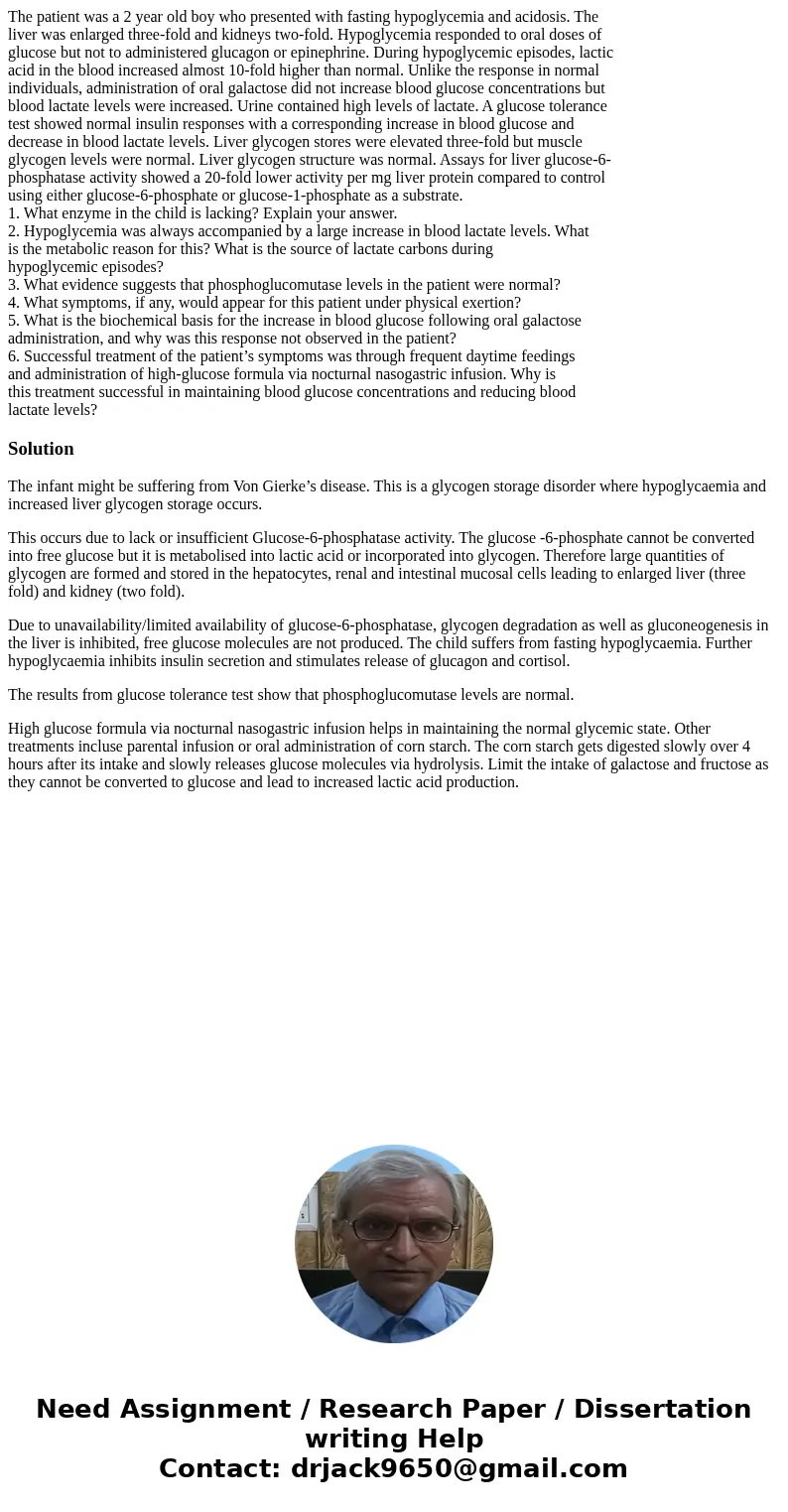The patient was a 2 year old boy who presented with fasting
The patient was a 2 year old boy who presented with fasting hypoglycemia and acidosis. The
liver was enlarged three-fold and kidneys two-fold. Hypoglycemia responded to oral doses of
glucose but not to administered glucagon or epinephrine. During hypoglycemic episodes, lactic
acid in the blood increased almost 10-fold higher than normal. Unlike the response in normal
individuals, administration of oral galactose did not increase blood glucose concentrations but
blood lactate levels were increased. Urine contained high levels of lactate. A glucose tolerance
test showed normal insulin responses with a corresponding increase in blood glucose and
decrease in blood lactate levels. Liver glycogen stores were elevated three-fold but muscle
glycogen levels were normal. Liver glycogen structure was normal. Assays for liver glucose-6-
phosphatase activity showed a 20-fold lower activity per mg liver protein compared to control
using either glucose-6-phosphate or glucose-1-phosphate as a substrate.
1. What enzyme in the child is lacking? Explain your answer.
2. Hypoglycemia was always accompanied by a large increase in blood lactate levels. What
is the metabolic reason for this? What is the source of lactate carbons during
hypoglycemic episodes?
3. What evidence suggests that phosphoglucomutase levels in the patient were normal?
4. What symptoms, if any, would appear for this patient under physical exertion?
5. What is the biochemical basis for the increase in blood glucose following oral galactose
administration, and why was this response not observed in the patient?
6. Successful treatment of the patient’s symptoms was through frequent daytime feedings
and administration of high-glucose formula via nocturnal nasogastric infusion. Why is
this treatment successful in maintaining blood glucose concentrations and reducing blood
lactate levels?
Solution
The infant might be suffering from Von Gierke’s disease. This is a glycogen storage disorder where hypoglycaemia and increased liver glycogen storage occurs.
This occurs due to lack or insufficient Glucose-6-phosphatase activity. The glucose -6-phosphate cannot be converted into free glucose but it is metabolised into lactic acid or incorporated into glycogen. Therefore large quantities of glycogen are formed and stored in the hepatocytes, renal and intestinal mucosal cells leading to enlarged liver (three fold) and kidney (two fold).
Due to unavailability/limited availability of glucose-6-phosphatase, glycogen degradation as well as gluconeogenesis in the liver is inhibited, free glucose molecules are not produced. The child suffers from fasting hypoglycaemia. Further hypoglycaemia inhibits insulin secretion and stimulates release of glucagon and cortisol.
The results from glucose tolerance test show that phosphoglucomutase levels are normal.
High glucose formula via nocturnal nasogastric infusion helps in maintaining the normal glycemic state. Other treatments incluse parental infusion or oral administration of corn starch. The corn starch gets digested slowly over 4 hours after its intake and slowly releases glucose molecules via hydrolysis. Limit the intake of galactose and fructose as they cannot be converted to glucose and lead to increased lactic acid production.

 Homework Sourse
Homework Sourse